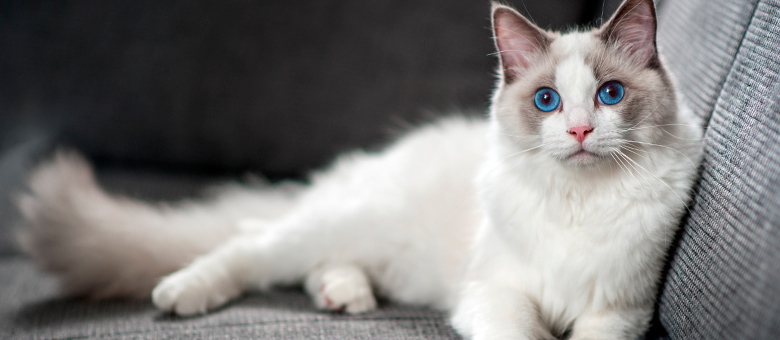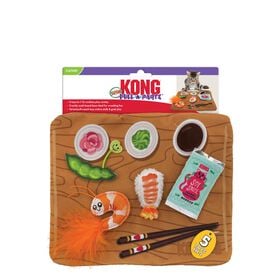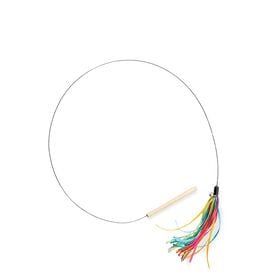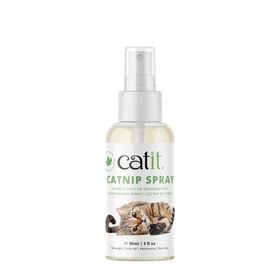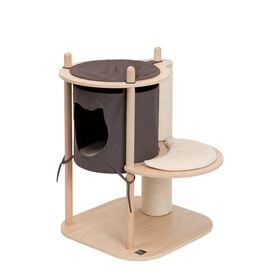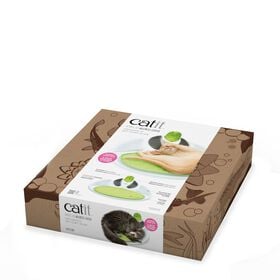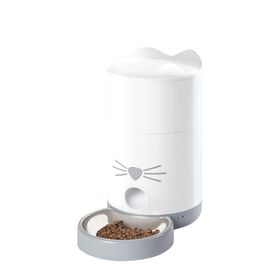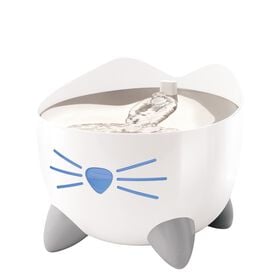Origins
The first Ragdoll cat appeared in the US courtesy of Ann Baker in the early 1960s. Ms. Baker had mated a crossbred cat named Josephine with her neighbour’s blue-eyed and unusually coloured cat. The result was a litter of remarkably beautiful kittens, which prompted Ms. Baker to create a breed of her own.
What followed was a series of highly precise cross-breeds that produced a large cat with a unique cream-and-brown-pattern coat. Ms. Baker became so obsessed by this breed she went as far as obtaining official classification from the State of California as well as in the Livre Officiel des Origines Félines [Official Book of Feline Origins]. She has gone on to begin her own association for establishing and upholding standards for the Ragdoll breed.
As for the name, it owes its origins to the fact that the first cats to be bred would go lifeless the minute their owners scooped them up in their arms.
Morphology and appearance
- Medium-length fur with a large outer coat and a very soft undercoat.
- At 10-20 pounds and with a growing period of between three and five years, Ragdolls are larger in size than average cats. Females tend to be slightly smaller than males.
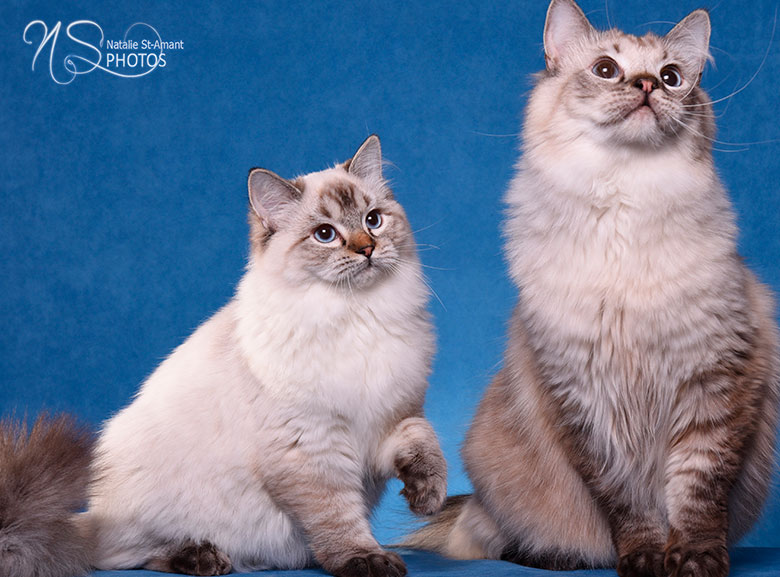
Also, Ragdolls can come in one of four distinct patterns:
- Colorpoint: Cream-coloured throughout the entire body with tail, paws, and top of head (including the characteristic Ragdoll eye mask) all darkened.
- Mitted: Identical to colorpoint, except the bottom of the paws and a part of the stomach are white.
- Bicolor: A portion of the paws and stomach are white with brown spots. Body is cream-coloured and both tail and head are brown.
- Van: Body and tail both mostly white, with brown on the tips of the ears and tail only. This is the only pattern that does not feature the eye mask, which is a point of contention among purists.
When referencing the colour of Ragdolls, remember that, since their creation, colour standards have evolved to include the original colour (“seal”), as well as blue, chocolate, lilac and nearly every other colour in the rainbow!
Maintenance
Despite their extremely soft medium-length fur, Ragdolls do not require much maintenance as knots don’t frequently form in their fur. Weekly brushing should suffice.
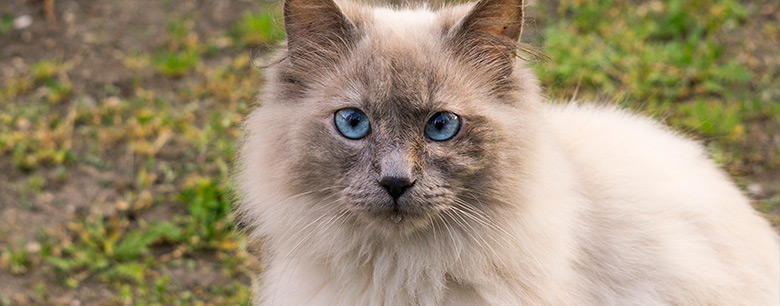
The ideal family for Ragdolls
Generally speaking, Ragdolls don’t have a ton of energy and their mannerisms tend to be gentle. However, as for any breed, the character of each individual cat should be examined. This will allow you to determine whether your cat is more active, and thus better suited for children, or more timid, and thus more likely to adapt to a slower-moving family.
Unusual facts
As legend would have it, Josephine — the very first Ragdoll cat ever created — became sensitive to pain after a car accident. She thus passed down her timid tendencies to her kittens, which is entirely scientifically plausible. According to Ann Baker, the origins and characteristics of these timid traits can be the result of genetic mutation. It could also very well be the work of God, or — perhaps — an alien kidnapping?
